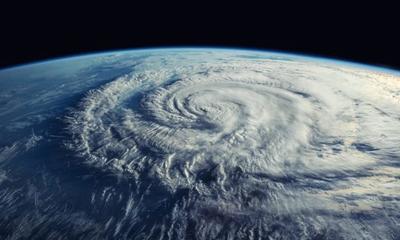The world continues to see an increase in extreme weather events, yet weather continues to be an overlooked factor for many business operations globally. This issue is primarily driven by the inability of modern Numerical Weather Prediction (NWP) models to predict critical localized weather phenomena in a cost effective and timely manner.
This is especially critical for wind power operations globally as better weather prediction would enable:
- Increased safety against extreme weather such as high winds that can cause damage to wind turbines or other equipment
- Better weather intelligence for day-ahead load forecasting to predict how much energy must be delivered for each hour of the next day
A visualization of the physical processes that occur in each grid cell within a numerical weather prediction model.
NWP models are designed to split the world into a three-dimensional grid that contains billions of grid cells both horizontally and vertically. Within each grid cell, meteorological governing equations are used to calculate physical processes that characterize how the air moves (ie., how heat and moisture are exchanged in the atmosphere) as the model steps forward in time. Atmospheric conditions, such as temperature, pressure, humidity, etc., are the same in each grid cell.
Models run at lower resolutions (ie., > 4 km), such as global weather prediction models, are computationally inexpensive but significantly lack the level of detail needed to accurately represent local scale weather features. In low resolution simulations, the grid cells are larger, which means a larger area will contain the same atmospheric conditions. This presents a significant issue for regional weather predictions because local scale processes are misrepresented and overlooked, especially over complex terrain (ie., mountains and coastal regions), where terrain driven processes greatly influence localized weather conditions (ie., lake-effect snow, pop-up thunderstorms, etc.).
A way to resolve this issue is to run a (regional) model at a higher resolution (ie., < 4 km) since these models can enhance the representation of critical local scale weather features. However, running models at higher resolutions has its disadvantages. The grid cells in higher resolution models are smaller, which means the model domain consists of more grid cells than it would if it were run at a lower resolution. Smaller grid cells enable the model to characterize the interactions of local scale physical processes more effectively, but extensively increases computational cost and the time it will take to complete the simulation since more calculations are being computed.
TempoQuest, the leading provider of accelerated local scale weather forecast software, is working to solve this issue through the development of their enhanced weather forecast software product, AceCAST, which is an accelerated version of the Weather Research and Forecasting (WRF) Model. AceCAST is run solely on Graphics Processor Units (GPUs) instead of traditional Central Processing Units (CPUs), which enables users to run higher resolution simulations five to fifteen times faster at a much lower cost.
AceCAST can prevent millions of dollars lost by energy companies each year
The risks created by lack of understanding and inactive management surrounding weather conditions are vast.
Hail or Lightning: Can damage or destroy turbines, which cost up to $2.2 million.
High Winds: While turbines are meant to harness wind energy, they can also be damaged by gusts of wind over 60 MPH.
Extreme temperatures: Many turbines are located in remote areas, which are subject to extreme temperature swings ranging from -22ºF to 131ºF.
Operational Decision making: Combining wind forecasts produced by AceCAST with the load forecast enables operators to commit the balance of the generation fleet to economically and safely serve load on the next day.
As discussed in “The Value of Wind Power Forecasting” written by Debra Lew and Michael Milligan at the National Renewable Energy Laboratory:
“For pitch-controlled wind turbines, power output varies as the cube of wind speed over a significant portion of the power output curve (see below figure). In this region, small improvements in forecasted wind speed would lead to significantly larger improvements in wind power forecasts.”
Example of wind turbine power output curve.
AceCAST offers the ability to improve weather forecasting through accelerated numerical weather prediction run on GPUs. As a result, the ability to produce localized weather predictions becomes more practical. When combined into load forecasting, statistical and machine learning algorithms will further enhance the weather prediction into actionable insights by giving the impact of the wind forecast to the power plant.
By having the ability to have a better forecast to start with, the ultimate uncertainty of the load forecast will be lower than using a less accurate, low resolution weather model.
Source: https://www.nrel.gov/docs/fy11osti/50814.pdf
For more information about AceCAST visit: https://tempoquest.com/
For more technical information about AceCAST visit: https://acecast-docs.readthedocs.io/en/latest/





